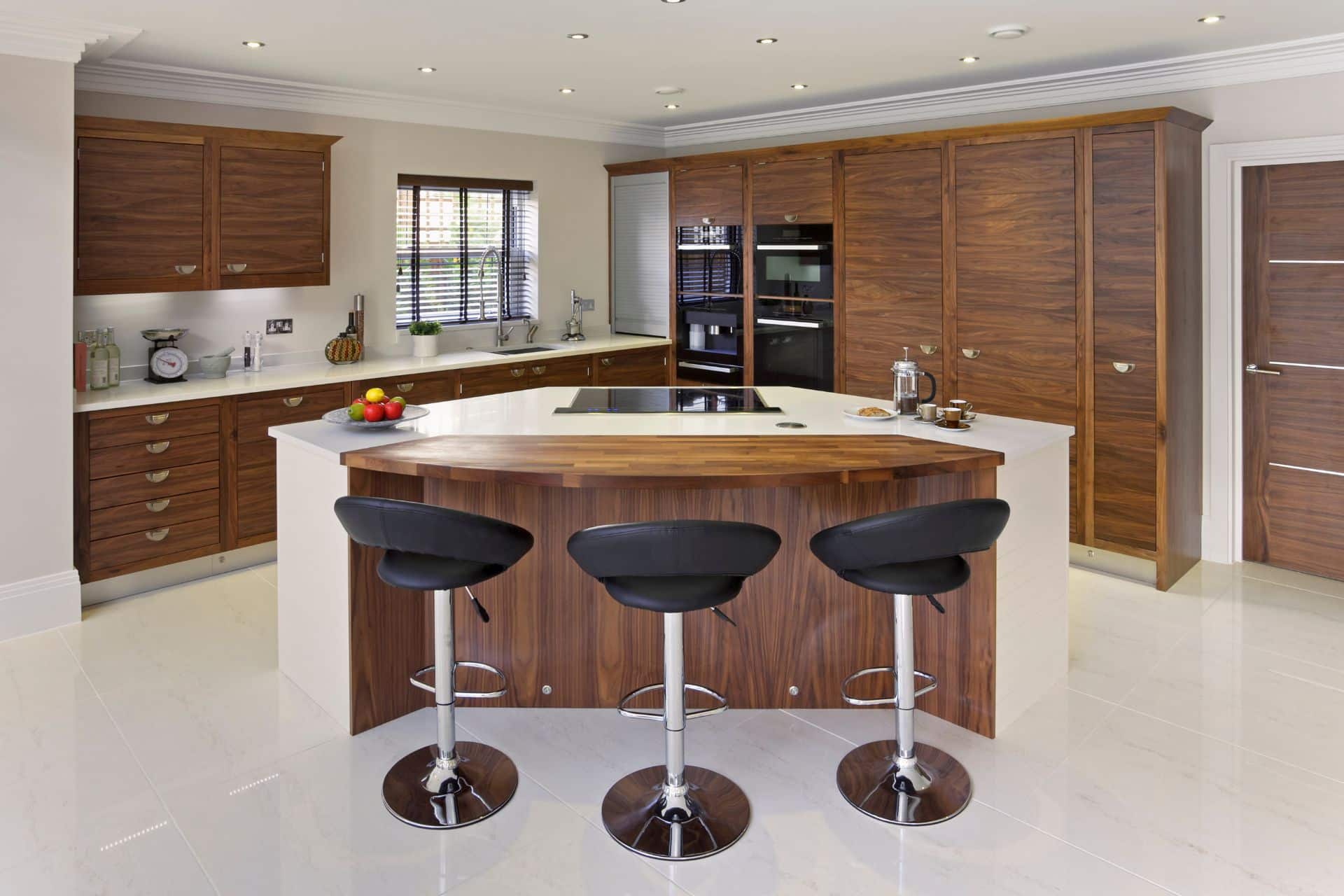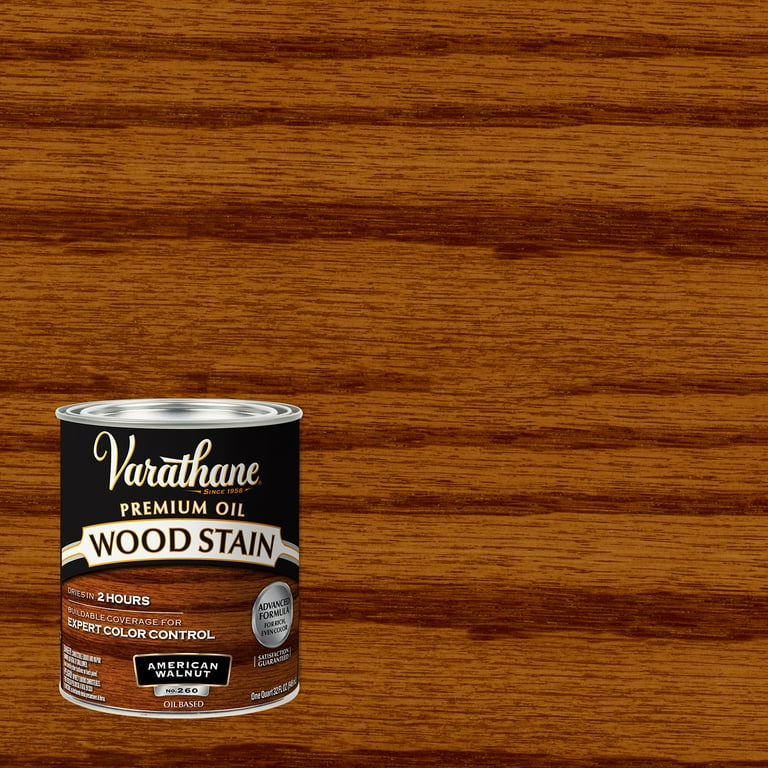Walnut wood is a dark brown color with hints of purple and chocolate tones. It has a rich, warm appearance that adds elegance to any space.
Walnut wood, known for its dark brown color with purple and chocolate undertones, adds a touch of warmth and sophistication to any area. Its deep, rich hue is a popular choice in furniture-making and interior design due to its ability to create a cozy and inviting ambiance.
The natural variations in color and grain pattern of walnut wood help to make each piece unique and visually appealing. Whether it’s used for flooring, cabinets, or decorative accents, walnut wood’s timeless beauty can enhance any home or office setting.
Exploring Walnut Wood Tones
Walnut wood tones are characterized by deep, rich hues ranging from dark brown to purplish-black, with subtle variations in grain patterns. The color of walnut wood exudes warmth and sophistication, making it a popular choice for furniture and interior design projects.
Walnut wood is prized for its rich, warm tones and exquisite grain patterns that add a touch of elegance to any space. As you delve into the world of walnut wood, you’ll discover a fascinating range of natural color variations and the influence that finishing techniques can have on the final hue.
Natural Color Variations
When it comes to walnut wood, there is no one-size-fits-all color. Natural color variations are part of what makes walnut wood so unique and visually appealing. The color ranges from a light tan to a deep chocolate brown, with various shades of amber, purple, and reddish undertones.
Influence Of Finishing Techniques
The choice of finishing technique can significantly impact the color of walnut wood. Different finishes not only enhance the wood’s natural color but can also introduce new tones and variations. Let’s delve into a few popular finishing techniques:
- Oil Finishes: Applying oil finishes, such as tung oil or linseed oil, deepens the natural color of walnut wood, bringing out its warmth and richness. These finishes also add a beautiful luster to the wood grain.
- Stain Finishes: Stains allow you to achieve a specific color on walnut wood. From a lighter stain that accentuates the wood’s natural hues to a darker stain that adds depth and intensity, the possibilities are vast. Experimenting with different stain colors can help you achieve the desired look for your walnut wood piece.
- Clear Finishes: Clear finishes, such as polyurethane or lacquer, provide a protective layer while allowing the natural beauty of walnut wood to shine through. These finishes emphasize the wood’s natural color and grain patterns without altering them significantly.
Whether you prefer the light and natural look or the darker and more dramatic appearance, the right finishing technique can help you achieve the desired walnut wood tone.
The Warmth Of Natural Color Variations
Walnut wood is known for its warm and sophisticated look, bringing a sense of elegance to any space. What makes walnut wood particularly unique is its natural color variations, which contribute to its overall charm. From the richness of heartwood to the delicate hues of sapwood, walnut wood showcases a beautiful array of colors that can vary from one piece to another.
Richness Of Heartwood
The heartwood of walnut has a deep, rich brown color that is highly sought after for its warmth and character. This darker hue is typically found in the innermost portion of the tree and is known for its lustrous and inviting appearance. It exudes a sense of luxury and sophistication, making it a popular choice for high-end furniture and cabinetry. The heartwood of walnut can range from a dark chocolate brown to a reddish-brown, and it often features a stunning mix of lighter and darker streaks that add depth and visual interest.
Delicate Hues Of Sapwood
In contrast to the darker heartwood, the sapwood of walnut offers a lighter and more subtle color palette. Sapwood is the outer part of the tree trunk, and it features tones that range from pale yellow to a light tan. While sapwood is often considered less desirable for its less pronounced color, it adds a unique contrast and can be used creatively in woodworking projects. The delicate hues of sapwood lend a certain airiness and brightness to the overall appearance of walnut wood, providing a sense of balance and natural beauty.
Overall, the natural color variations of walnut wood, from the richness of heartwood to the delicate hues of sapwood, create a captivating and warm aesthetic that is highly sought after in interior design. Whether you prefer the deeper, more dramatic tones of heartwood or the lighter and more subdued shades of sapwood, walnut wood offers a timeless and versatile option that brings beauty and sophistication to any space.
Enhancing Walnut Wood Tones Through Finishing
When it comes to enhancing the natural beauty of walnut wood, finishing is the key. The right finishing technique can bring out the rich, warm tones of walnut, highlighting its unique grain and character. Understanding the various finishing options available for walnut wood is essential in achieving the desired aesthetic appeal for your furniture or woodworking project.
Oil Finishes
Oil finishes, such as tung oil or linseed oil, are popular choices for enhancing the natural color of walnut wood. These finishes penetrate the wood to bring out its depth and luster, while also providing protection against moisture and wear. The warm, amber hue of these oil finishes adds a timeless elegance to walnut wood, making it a preferred choice for many woodworking enthusiasts.
Staining Options
When it comes to staining walnut wood, it’s essential to choose a stain that complements its natural tones rather than trying to drastically alter its color. Lighter, transparent stains can accentuate the warm brown hues of walnut, while darker stains can deepen its color for a more dramatic look. Carefully selecting the right stain can lead to beautiful results that highlight the natural beauty of walnut wood.

Credit: nvkitchenandbath.com
Preserving The Beauty Of Walnut Wood
Walnut wood is known for its exquisite beauty and rich, warm tones. Whether you have walnut furniture, flooring, or decor, it’s important to take proper care of it to ensure its longevity and preserve its stunning aesthetic appeal.
Maintenance Tips
With regular maintenance, you can keep your walnut wood looking fabulous for years to come. Here are some simple yet effective tips to help you in this regard:
- Keep it clean: Dust your walnut wood regularly to prevent the buildup of dirt and grime. Use a soft, lint-free cloth to gently wipe the surface, and avoid using abrasive cleaners or harsh chemicals.
- Use furniture polish: Apply a high-quality furniture polish specifically designed for wood to enhance its natural beauty. Look for one that contains protective ingredients like beeswax or carnauba wax.
- Apply a protective finish: Consider applying a protective finish, such as a clear coat or wax, to shield the wood from potential damage. This extra layer can help prevent scratches, stains, and moisture penetration.
- Avoid direct sunlight: Excessive exposure to sunlight can cause walnut wood to fade over time. Position your furniture or other walnut wood items away from direct sunlight or use window treatments to protect them from harmful UV rays.
- Regular inspection: Take the time to inspect your walnut wood regularly for any signs of wear or damage. Catching issues early on allows you to address them promptly and prevent further deterioration.
Protection From Fading
To preserve the natural color of walnut wood and prevent fading, consider the following tips:
- Utilize window treatments: Curtains or blinds can serve as a barrier against harmful UV rays that cause fading. Keep them closed during peak sunlight hours to minimize sun exposure.
- Rotate your furniture: If possible, periodically rotate your walnut wood furniture to ensure even exposure to sunlight. This helps prevent one side from fading more than the other.
- Use protective coatings: Apply a clear, UV-protective coating to the wood surface to reduce the impact of sunlight. Choose a product formulated specifically for wood to maximize its effectiveness.
- Consider furniture covers: When sunlight is particularly intense or during prolonged periods of absence, covering your walnut wood furniture with protective covers can safeguard it from fading.
By following these maintenance and protection tips, you can keep your walnut wood in prime condition, showcasing its natural colors and intricate grain patterns for years of enjoyment.
Incorporating Walnut Wood Tones In Design
When it comes to interior design, the choice of wood tones can greatly impact the overall aesthetic of a space. Walnut wood, with its warm and rich tones, is a popular choice for adding elegance and sophistication to various decor styles. If you’re considering incorporating walnut wood into your design, let’s explore some tips on how to seamlessly complement different decor styles and balance this beautiful wood with other elements.
Complementing Décor Styles
Incorporating walnut wood tones in design can effortlessly enhance different decor styles. From contemporary to traditional, this versatile wood can adapt to various aesthetics. Here are some ways to integrate walnut wood tones into different decor styles:
- 1. Modern Minimalism: In minimalist interiors, walnut wood brings warmth and organic beauty. It can be applied as accents in furniture, shelving, or trim details, providing a striking contrast to clean lines and neutral color palettes.
- 2. Scandinavian Design: Walnut wood complements the light and airy Scandinavian style perfectly. Adding walnut furniture or accessories to a predominantly white and natural-toned space can create a cozy and inviting atmosphere.
- 3. Rustic Charm: In rustic or farmhouse-style interiors, walnut wood can be used for larger furniture pieces like dining tables or kitchen cabinets. Its deep brown tones add depth and character to the space, creating a warm and inviting ambiance.
- 4. Mid-Century Modern: Walnut wood flourished during the mid-century modern era and continues to be a signature element of this style. Incorporating walnut furniture, such as a sideboard or lounge chair, instantly adds a touch of retro sophistication to the space.
By considering the different decor styles and their unique characteristics, you can successfully integrate walnut wood tones into your design to achieve the desired ambiance and visual appeal.
Balancing With Other Elements
While walnut wood can be a standout feature in any design, balancing it with other elements is crucial to create harmony and visual interest. Here are some ways to achieve balance when using walnut wood:
1. Contrast Colors: Pairing walnut wood with lighter or cooler-toned colors, such as white, gray, or blue, helps create a balanced contrast. This allows the wood’s warm tones to stand out and become a focal point in the design.
2. Mix Textures: Introducing different textures alongside walnut wood can add depth and dimension to the space. Consider combining it with materials like glass, metal, or textured fabrics to create an interesting visual interplay.
3. Scale and Proportion: When incorporating walnut wood furniture, ensure the sizes and proportions are harmonious with the rest of the space. Oversized pieces may overwhelm a smaller room, whereas too many small walnut accents can disrupt the overall balance.
4. Natural Elements: Walnut wood naturally complements other natural elements, such as plants, stone, or woven materials. Consider incorporating these elements alongside walnut to create a cohesive and nature-inspired design.
By consciously balancing walnut wood with other elements in your design, you’ll create a cohesive and visually appealing space that showcases the beauty of this exquisite wood.

Credit: www.walmart.com
Frequently Asked Questions On What Color Is Walnut Wood
What Is The Natural Colour Of Walnut Wood?
The natural color of walnut wood is a rich, dark brown tone.
Is Walnut A Light Or Dark Wood?
Walnut is a dark wood with rich tones and deep brown shades. Its natural beauty makes it stand out as a stylish and elegant choice for furniture and decor.
What Color Is Walnut Close To?
Walnut is close to a rich, dark brown color with hints of purple and gray. It’s a warm and earthy hue that adds a touch of elegance to any space.
What Wood Color Is Similar To Walnut?
A wood color similar to walnut is dark brown with hints of rich, warm tones. It has a deep and luxurious appearance, making it a popular choice for furniture and flooring.
Conclusion
The color of walnut wood varies from light brown to deep chocolate. Understanding the different hues and figuring out the right finish can help you enhance the natural beauty of walnut wood in your decor. Whether it’s for furniture, flooring, or cabinetry, walnut wood adds warmth and elegance to any space.


